
Zig-Zag Puzzler
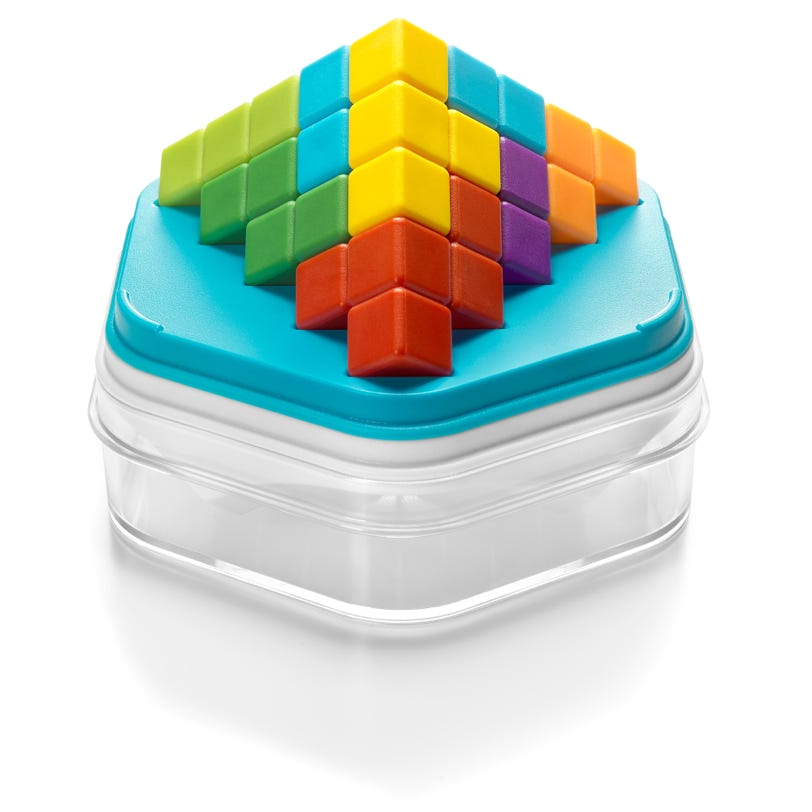
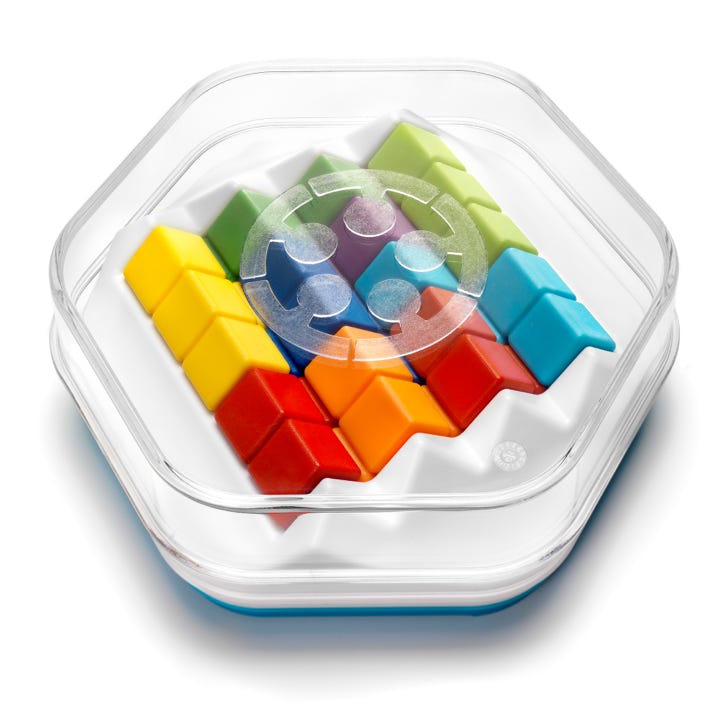
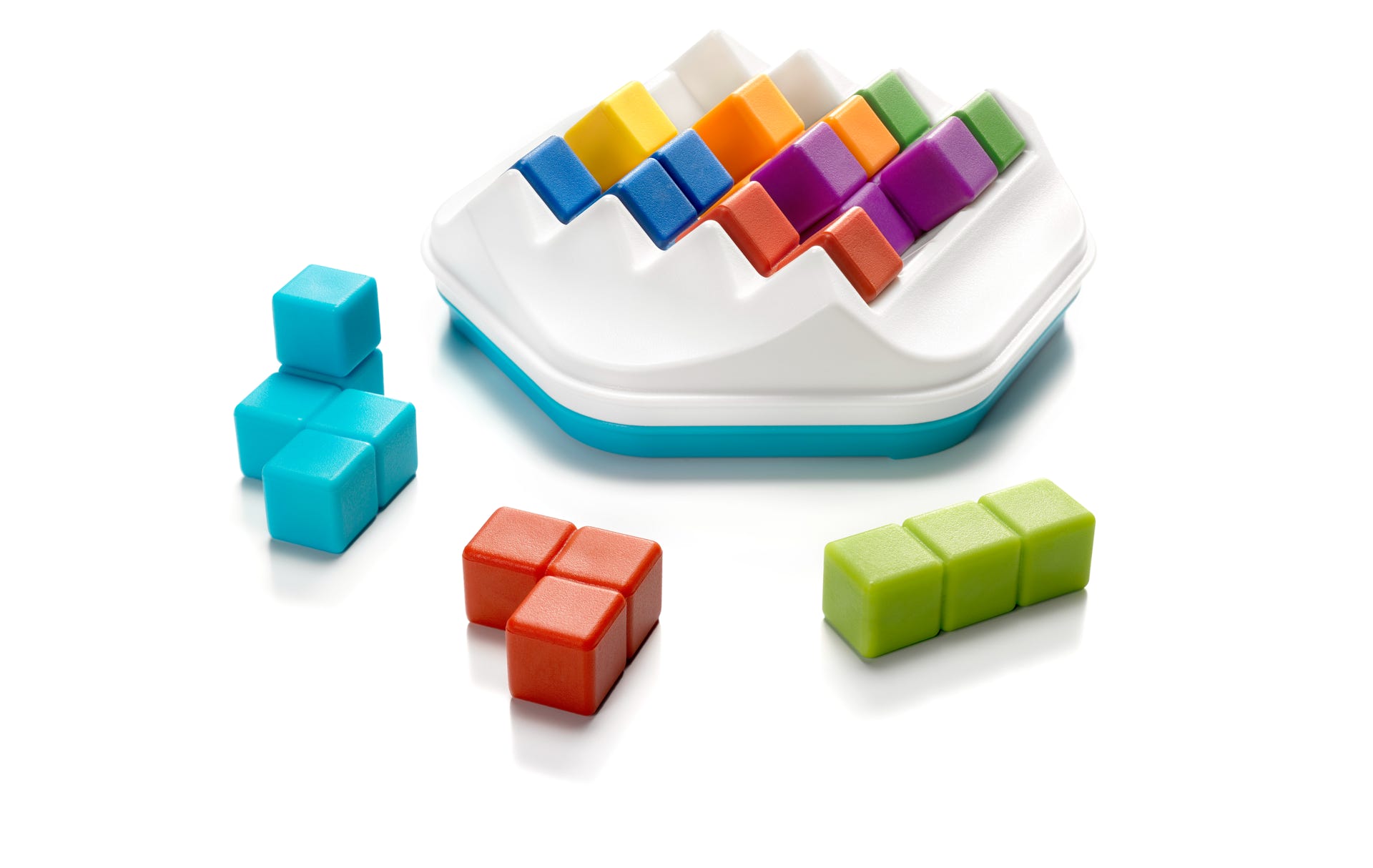
The product development of ZigZag Puzzler (for SmartGames)
Raf Peeters, January 2020
The idea for this game dates back many years and was originally intended for an IQ-Puzzle. Instead of placing blocks horizontally in a grid, I wanted to place them as a wave or zigzag. This would still look simple, but would not be that easy to solve because blocks are placed in 2 overlapping layers this way. Some blocks, like for example the red L-shaped block, can however be placed in many more ways on the grid than you would think. When we started developing this puzzle game, we quickly realized that the blocks would become too small and the game board too high to fit inside the standard format of an IQ-puzzle. So we changed the shape of the game board to a square and started all over. We already tried to make an abstract game in the same size and packaging as our compact games. But both IQ-Candy and Anti-Virus Mutation were not that successful, maybe because all other compact games have a strong theme (like Atlantis Escape) or feature cute animals (like Squirrels Go Nuts!). The first prototypes also looked way too big. Too much plastic for what it did.
So we made everything a lot smaller, so that it would fit inside the packaging of the Cube Puzzlers. And we looked at one of the most successful SmartGames so far: IQ-Puzzler Pro. Part of the succes of IQ-Puzzler Pro is probably because it features both 2D and 3D challenges. So I tried to replicate that concept into this game. Would it be possible to use the same puzzle pieces from the zigzag game board to build a simple looking 3D construction? This proved to be much harder than anticipated. If I used more pieces, this would not be a problem. But as always, I tried to limit the number of puzzle pieces. The key to solve this issue, was to use the red small L-shaped puzzle piece twice. The final game includes a mixture of only 9 puzzle pieces, some very simple, some complex.
We now had two different games with different game boards but the same set of puzzle pieces. We tried to combine this in one double sided game board, but the pyramid (with a triangular base) didn’t fit in a nice way on a square game board. Therefore, the final version has a hexagonal game board. This combines nicely with the pyramid and we could also make it work with the rectangular game board of the zigzag challenges. When you look at the packaging you will see a pyramid build on the blue side of the game board. There is a small blister to keep everything in place. But if you want to take the game with you or you don’t want to keep the cardboard packaging and blister, you can store all puzzle pieces and challenge booklets on the white zigzag side of the game board. It has a nice transparent lid and almost looks like a jewel case.
The pyramid is not a classic pyramid with a square base, but has a triangular base. When you stack the blocks, all puzzle pieces are angled in all directions. This results in small triangular cutouts in the game board, which look very strange, because a triangle is the last thing you would expect when you build with 3D squares (= cubes). The resulting pyramid is basically the shape you get when you would cut off one corner of a big cube. So in a way, it does make sense to put this game in the same type of packaging as the other “Cube Puzzlers”, although building a cube is not the object of the game.
It takes some time to get used to this game. When you build a pyramid, it’s not immediately clear how big pieces like the light blue puzzle piece fit on the base level of the game board. Often you start with placing them in orientation that doesn’t work. But when you do find a position that fits, it feels very satisfying, because every solution is perfectly stable.
Contrary to what you might expect, the zigzag side is not easier than the pyramid side. The puzzle pieces on this side are only in one direction tilted 45°. In the other directions they follow an orthogonal grid, which normally should be easier. Another funny observation is that the simplest puzzle piece (the light green rectangular block) is the one with the fewest possibilities on both sides of the game board. Even the very complicated blue pieces have much more options.
When we play tested the final game, people found it really hard. So we had to add extra tips to the challenges, not once but twice. This helps of course a lot for the easy challenges… at least once you have figured out how to put all blocks shown in the setup on the grid. For the starter and junior level, making the setup is part of the challenge and often harder than adding the few pieces that are left over. The harder the challenges are, the easier the setup becomes. But then of course solving the challenge and placing the remaining puzzle pieces becomes hard. We already used the word “Pro” for one of the Cube Puzzlers, so to indicate that this puzzle is not for beginners we put age 12+ on the packaging. Cube Puzzler Go is for age 8+ and Cube Puzzler Pro is for 10+ to give you an idea. But I really like this one, because it looks so cool and basically you get two games for the price of one. And it is easier to take with you and store all parts than both Cube Puzzlers too.
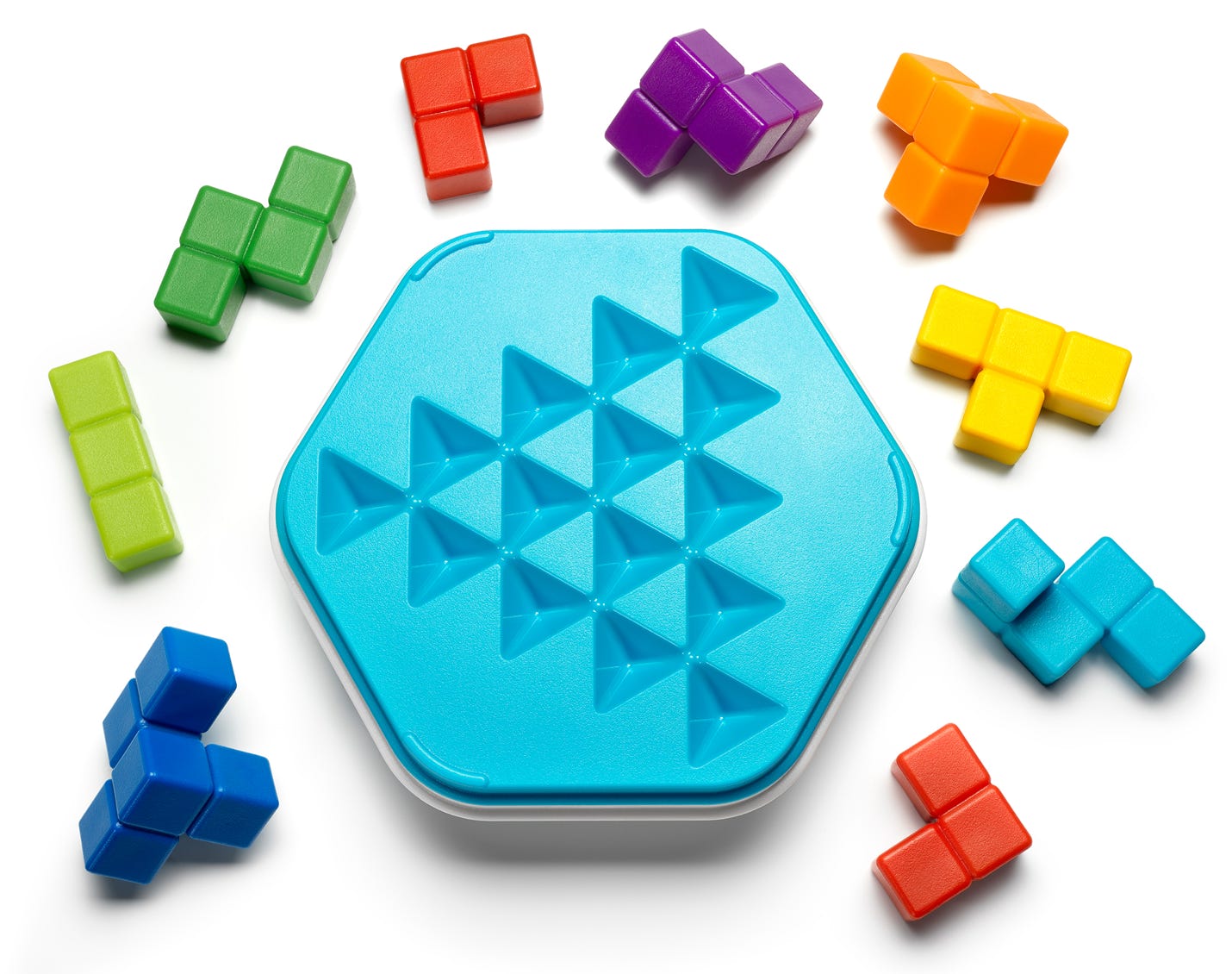
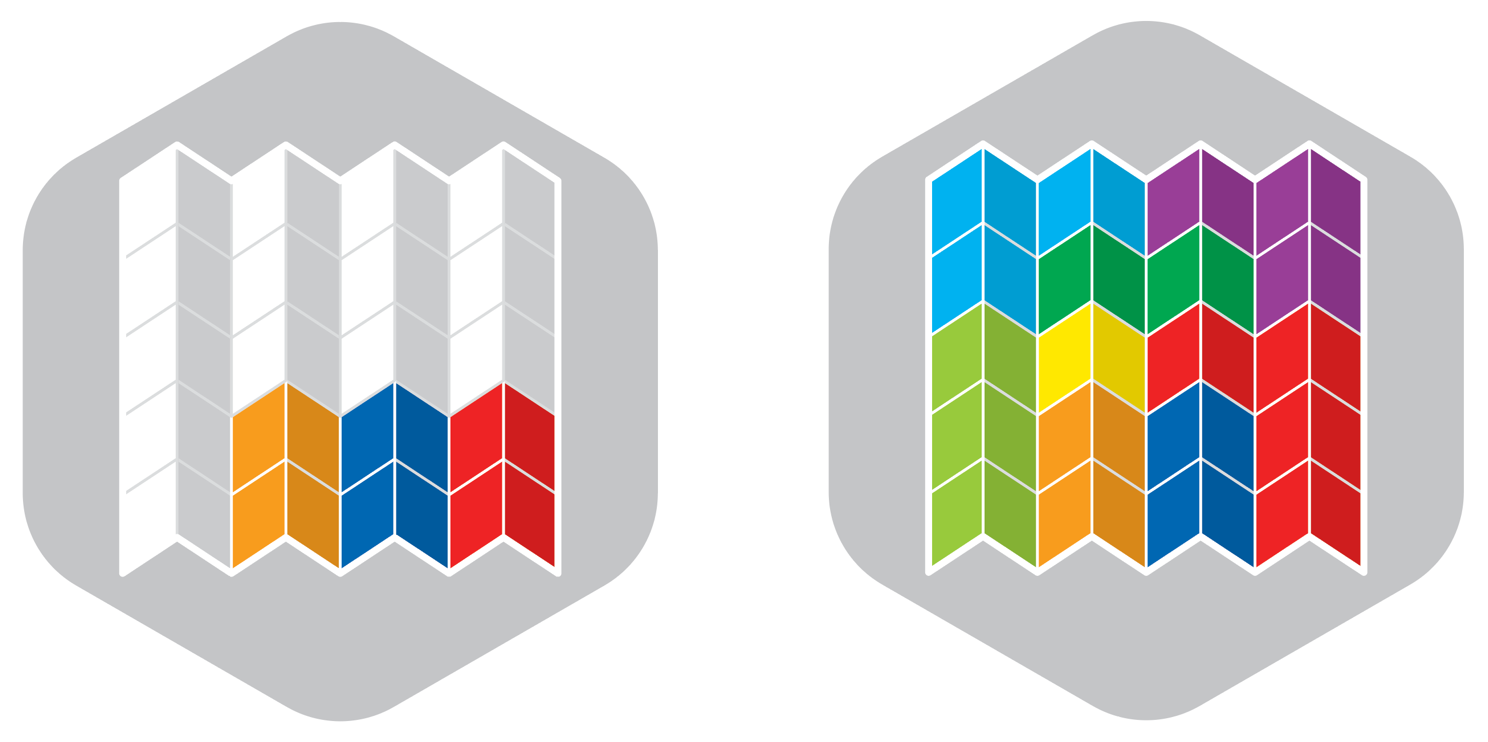
example of a challenge (left) and solution (right) on the zigzag side
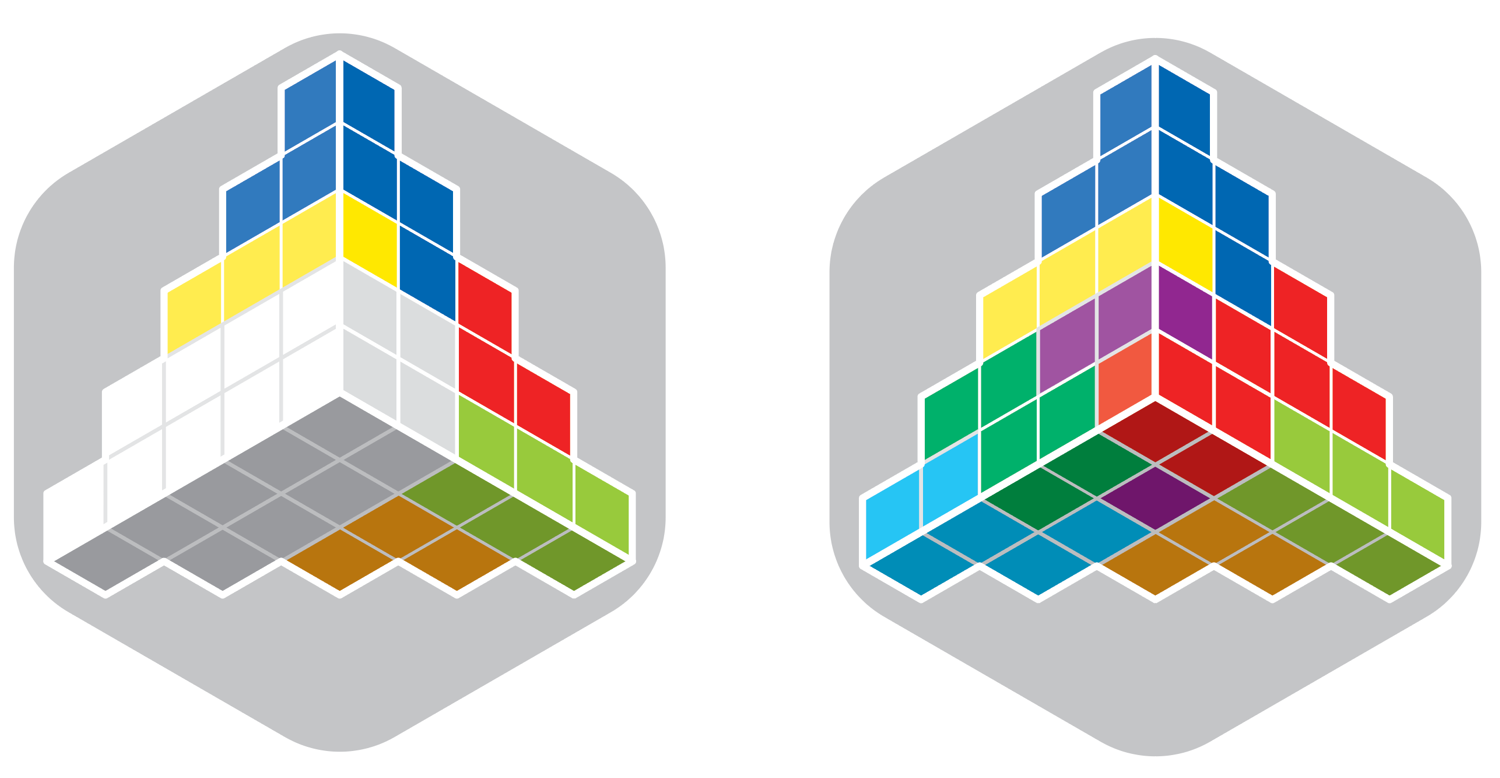
example of a challenge (left) and solution (right) on the pyramid side
GAME RULES ZIGZAG PUZZLER
This game includes 2 challenge booklets, each with 40 challenges.
1) Select a challenge.
2) Place all the pieces on the game board so that the colors in your structure match the colors shown in the challenge.
• The challenges in the first booklet show a top view of a completed pyramid built on the blue side of the game board.
• The challenges in the second booklet show a top view of the white game board that is filled up in two layers (angled at 45°). None of the puzzle pieces should stick out higher than the zigzag ‘teeth’ on the border.
• White squares in a challenge indicate the colors that are not revealed. Use deduction skills to figure out what colors should be placed in these squares!
• Sometimes there are multiple ways to place puzzle pieces on the game board as you start a challenge. For example: if a challenge shows 3 red adjacent squares, these could be from one red puzzle piece OR from a combination of red pieces. So doing the setup is already part of the challenge!
3) There is only 1 solution, which can be found at the back of the booklet.
NOTE: You can store all of the puzzle pieces with the 2 challenge booklets on top on the white side of the game board. This way you can easily take the game with you wherever you go!
Website ©2020 Raf Peeters
Products and images: © Smart